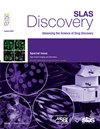Heterotypic spheroids as a strategy for 3D culture of cryopreserved primary human hepatocytes in stirred-tank systems
IF 2.7
4区 生物学
Q2 BIOCHEMICAL RESEARCH METHODS
引用次数: 0
Abstract
Primary human hepatocytes (PHHs) are the preferred cell source to address liver function. Despite originating from the native tissue, one of the bottlenecks when using primary material is the donor-to-donor variability. Cryopreserved PHHs offer a high number of cells from the same donor and standardization of cell isolation and cryopreservation procedures, mitigating some of the inter-donor variability. Still, PHHs from different commercial sources present variability in vitro in several parameters, including viability post-thawing, plating capacity, aggregation potential and culture longevity. Here we combine stirred-tank culture systems, which allow robust aggregation processes, and co-culture approaches with the HepaRG cell line to generate spheroids from cryopreserved PHHs. By employing small-scale stirred-tank culture systems we could cope with the scarce availability and high cost of primary material. In the optimized co-culture conditions we could generate PHH:HepaRG spheroids from 12 donors acquired from 4 different commercial sources. All PHHs showed similar aggregation profiles, forming small compact heterotypic spheroids as early as 3 days in co-culture and were maintained for at least 5 weeks in culture. The heterotypic spheroids maintained the hepatocyte polarization and identity and showed metabolization capacity for 5 main phase I metabolizing enzymes, namely CYP3A4, CYP2C9, CYP1A2, CYP2D6, and CYP2C8. Moreover, the heterotypic spheroids showed the capacity to metabolize a novel compound under clinical development, showing their potential to be employed in drug discovery applications.
Overall, we present a robust aggregation strategy for cryopreserved PHHs from different suppliers, applicable for pharmacological and toxicological in vitro research.
异型球体作为在搅拌槽系统中低温保存的人原代肝细胞三维培养的策略。
原代人肝细胞(PHHs)是解决肝功能的首选细胞来源。尽管来源于原生组织,但使用原生材料的瓶颈之一是供体与供体之间的差异。低温保存的phh提供了来自同一供体的大量细胞,并且标准化了细胞分离和低温保存程序,减轻了一些供体间的差异。尽管如此,来自不同商业来源的phh在体外的几个参数上存在差异,包括解冻后的活力、镀敷能力、聚集潜力和培养寿命。在这里,我们结合了搅拌罐培养系统,它允许强大的聚集过程,以及HepaRG细胞系的共培养方法,从冷冻保存的phh中产生球体。采用小型搅拌槽培养系统可以解决原料稀缺和成本高的问题。在优化的共培养条件下,我们可以从4个不同的商业来源获得的12个供体中产生PHH:HepaRG球体。所有phh均表现出相似的聚集特征,早在共培养的第3天就形成了紧凑的小异型球体,并在培养中维持了至少5周。异型球体维持了肝细胞的极化和特性,并表现出对CYP3A4、CYP2C9、CYP1A2、CYP2D6和CYP2C8这5种主要I期代谢酶的代谢能力。此外,异型球体在临床开发中显示出代谢新化合物的能力,显示出它们在药物发现应用中的潜力。总的来说,我们提出了一种强大的聚合策略,适用于来自不同供应商的冷冻保存phh,用于体外药理学和毒理学研究。
本文章由计算机程序翻译,如有差异,请以英文原文为准。
求助全文
约1分钟内获得全文
求助全文
来源期刊

SLAS Discovery
Chemistry-Analytical Chemistry
CiteScore
7.00
自引率
3.20%
发文量
58
审稿时长
39 days
期刊介绍:
Advancing Life Sciences R&D: SLAS Discovery reports how scientists develop and utilize novel technologies and/or approaches to provide and characterize chemical and biological tools to understand and treat human disease.
SLAS Discovery is a peer-reviewed journal that publishes scientific reports that enable and improve target validation, evaluate current drug discovery technologies, provide novel research tools, and incorporate research approaches that enhance depth of knowledge and drug discovery success.
SLAS Discovery emphasizes scientific and technical advances in target identification/validation (including chemical probes, RNA silencing, gene editing technologies); biomarker discovery; assay development; virtual, medium- or high-throughput screening (biochemical and biological, biophysical, phenotypic, toxicological, ADME); lead generation/optimization; chemical biology; and informatics (data analysis, image analysis, statistics, bio- and chemo-informatics). Review articles on target biology, new paradigms in drug discovery and advances in drug discovery technologies.
SLAS Discovery is of particular interest to those involved in analytical chemistry, applied microbiology, automation, biochemistry, bioengineering, biomedical optics, biotechnology, bioinformatics, cell biology, DNA science and technology, genetics, information technology, medicinal chemistry, molecular biology, natural products chemistry, organic chemistry, pharmacology, spectroscopy, and toxicology.
SLAS Discovery is a member of the Committee on Publication Ethics (COPE) and was published previously (1996-2016) as the Journal of Biomolecular Screening (JBS).
 求助内容:
求助内容: 应助结果提醒方式:
应助结果提醒方式:


